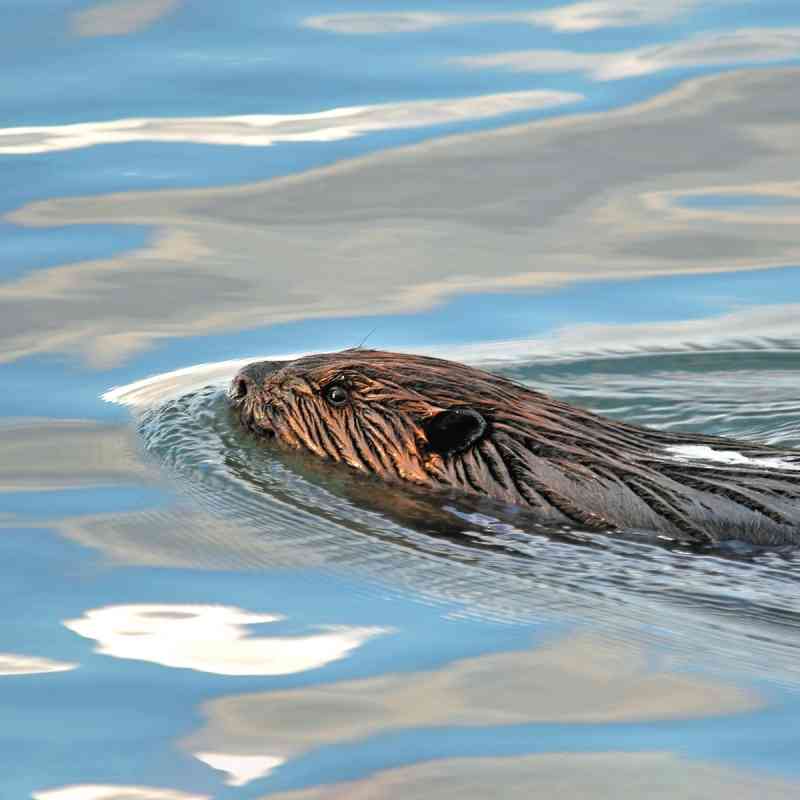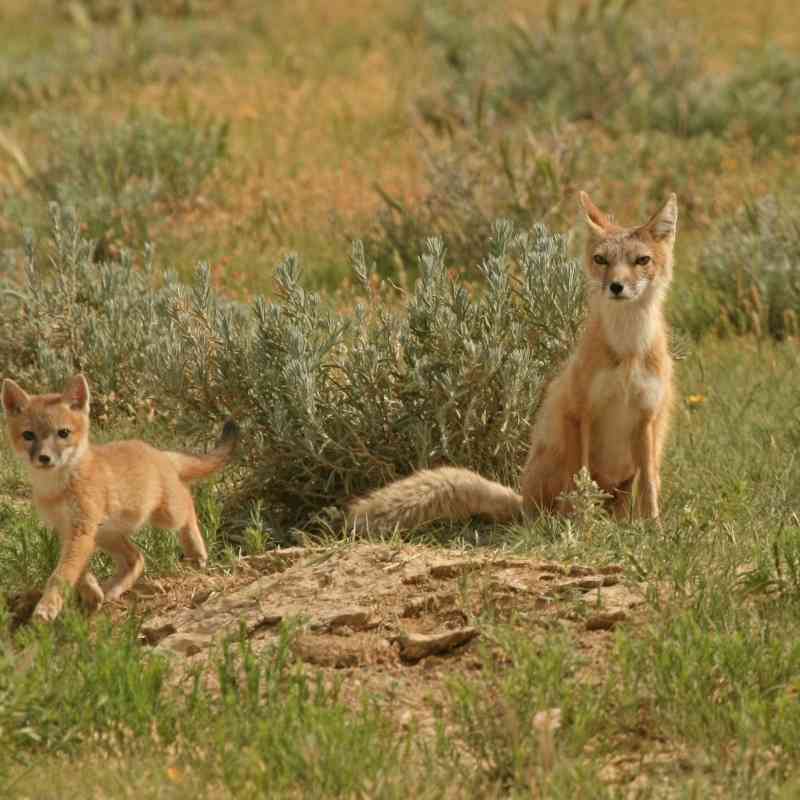A Q&A with Defenders’ Water Policy Advisor
The calm flow of a California river is interrupted by a small “plop!” as a salmon jumps out of the water. A string of rattling calls accompanies a flock of sandhill cranes flying to a nearby wetland. A crack of a log followed by a splash gives away a beaver carrying new material to its den.
Like people, these animals rely on California’s water, which has a problematic management history. Read on for a Q&A with Defenders of Wildlife’s water policy advisor, Ashley Overhouse, to learn how California manages this critical resource and the impacts on threatened and endangered species.
How does California manage its water?
First, let's look at the landscape to inform how we implement best practices for living alongside freshwater wildlife and protect the most at-risk species. California has over 1,300 reservoirs and dams throughout the state, and hundreds of miles of canals and infrastructure moving water around the state. All of this is managed under two projects: the State Water Project (SWP) and the federally run Central Valley Project (CVP).
The majority of the water goes to large agricultural production, feeding people across the nation. Additionally, most California citizens receive their water from one of these two projects and wildlife depends on accessing the highly altered waterways. Depending on the administration we are under, wildlife may get more or less consideration. In recent years, the previous federal administration wreaked havoc on California’s aquatic habitats and we are still feeling those impacts today.
How did the previous management wreak havoc?
We hit rock-bottom under the Trump administration. During this time, water-dependent species in California faced irresponsible management decisions, including making changes that threatened serious harm to imperiled species depending on California’s rivers. The most egregious example was when the administration changed the Endangered Species Act compliance on the CVP and SWP in 2019.
Under the ESA, federal agencies prepare Biological Opinions to ensure that the operations of large water diversion projects in California are not likely to jeopardize the continued existence of threatened and endangered species, including Chinook salmon. Unfortunately, the 2019 Biological Opinions were not based on the best available science. To make matters worse, since those opinions were published, Governor Newsom’s administration allowed agencies to deviate from water quality protections for California’s rivers and the San Francisco Bay-Delta estuary. The culmination of these management actions led to disastrously low population numbers of salmon — so low this past year that the salmon fishing season was closed for the third time in state history.
California has salmon?
Yes! California has the southernmost range of Chinook salmon. They are keystone species and are the “canary in the coal mine” for our water systems. Dams have destroyed up to 90% of the salmon habitat in the state. Additionally, fish returning upriver are facing abnormally warm water temperatures and decreased free-flowing water.
There are three runs of Chinook salmon found in California. The fall run is the most populous and is not currently protected under the ESA. This run makes up the California salmon fishing industry, whose season may be closed again this year due to low numbers of the fish. The winter and spring runs are listed under the ESA as endangered and threatened, respectively.
As part of the fish’s protections, there are monitoring locations throughout the state to determine how many fish are returning to their original birth river or tributary to spawn. If the numbers or the overall health of the run population is low, then commercial fishing may be halted for the season or water quality improvement measures can begin.
Because these salmon have a three-year life cycle, it’s critical for monitors to catch declines and set up protections as early as possible.
What is the “Salmon Extinction Plan”?
The 2019 Biological Opinions were nicknamed the “Salmon Extinction Plan” because they would allow commercial fishing until zero salmon returned. If action is not taken for a certain number of years, then you have effectively functionally killed all the salmon.
How do we stop this plan?
Thankfully, Defenders of Wildlife, several of our conservation allies and the state of California agreed the 2019 Biological Opinions were terrible for salmon. In coordination with state and federal agencies, we are actively influencing interim project operations and trying to improve outcomes for permanent Biological Opinions.
For anyone interested in this process or curious about the details of these plans, check out the National Academy of Science’s independent review. The review panel is traveling all over the state to hold meetings, which are public and include an opportunity for attendees to ask questions and give comments.
What can I do to help?
If you currently live in California, learn about where your water comes from and what these projects are doing to get it to you. Regardless of whether there's flood or drought, everyone in California needs to conserve water.
Everybody across the nation should learn where their food comes from. California provides a fourth of our nation's food for consumable goods. So, even if you aren’t drinking California water, you may be eating it through your produce. Eating locally can reduce your impact on California’s water issues.
We can all speak up for wildlife, too. From salmon to sandhill cranes, and garter snakes to beavers – animals relying on California watersheds need your help. The National Marine Fisheries Service and the U.S. Fish and Wildlife Service are the leading agencies crafting the new Biological Opinions. It’s important for them to hear that the public cares about these freshwater species and that the new plans should be based on the best available science.
The new Biological Opinions should be out by the end of the year. So, of course, you can also make sure you’re getting the latest updates by following along with Defenders!
Author
Ashley Overhouse
Allison Cook
Areas of Expertise: Communications, writing for the blog and website
Allison joined Defenders of Wildlife in 2023 after working for Smithsonian's National Zoo and Conservation
comments
Wildlife & Wild Places

